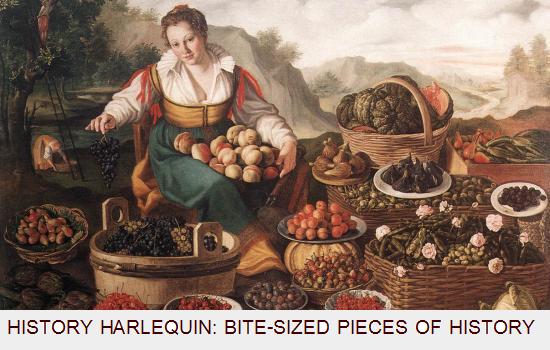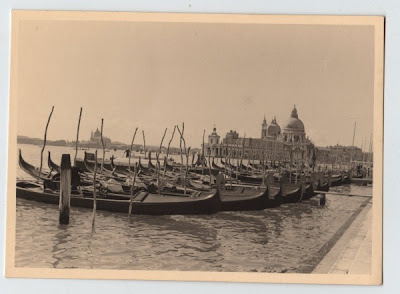And this work of mine is copyrighted 2010 so please don't cut and paste this info into your papers as that's just plagiarism and really not cool. Plus my own musings will probably come into it, as will any side comments and totally biased opinions I may have that you may not necessarily share. So go the hard yards, do the research and write the darn thing yourself!
If you have any questions though or want ideas on books or other sources please email me. Oh, one more thing - if it's the French Renaissance you're looking for this blog here is really great.
So let's begin.
The Italian Renaissance is generally considered to begin in the late 14th century (after the Black Death) and end during the middle 16th century (around the beginning of the Reformation). It refers to a time of great cultural and social change as European society moved out of the Middle Ages and into a new era of enlightenment and change. The term renaissance is a French one meaning reborn. In Italian the term is il rinascimento.
The Italian artists and writers of the late 14th century Giotto, Boccaccio, Petrarch and Dante are considered amongst the forerunners of the enlightened souls who were at the birth of the Renaissance. Although these men came from different places it was the city of Florence where they found patronage and acceptance.
Florence is often called "the cradle of the Renaissance" because it was the city that most strongly supported the development of new ideas and encouraged the looking back to antiquity. Fundamentally, the Renaissance examined the literary works of the ancient Greeks and Romans, works that had long lay doramnt in the minds of the medieval Europeans. These works included Plato, Aristotle, Socrates, Homer, Cicero, Pliny, Plutarch, amongst others. These ancient writers were revived and revered by the new emerging writers of the 14th century and hailed as literary and artistic inspiration. Much of the works written, painted, sculpted and otherwise created during the Renaissance take their inspiration not only from the writings of ancient Greeks and Romans but also from Greek and Roman mythology.
Some of the most prominent artists during the Italian Renaissance include Michelangelo Buonarotti famous, amongst other things for his painting of the Sistine Chapel (and the glorious Creation of Adam scene)
 The Sistine Chapel (ceiling) - Michelangelo Buonarotti - 1508-1512
The Sistine Chapel (ceiling) - Michelangelo Buonarotti - 1508-1512and his giant statue David;
Sandro Botticelli of La Primavera and The Birth of Venus fame
 The Birth of Venus - Sandro Botticelli - c1485-87
The Birth of Venus - Sandro Botticelli - c1485-87Donatello, Masaccio, Domenico Ghirlandaio, Filippo and Filippino Lippi and Giovanni Bellini.
The architect Filippo Brunelleschi is the genius behind the dome of the Santa Maria del Fiore in Florence, a creation that astounded artists, humanists and mathematicians alike. His development of linear perspective was crucial to Renaissance architecture. And truly, he was the only one who could get that enormous dome to stay put on top of the church. A competition was run and his design was chosen as the winning one - it was like the X Factor of the 15th century!
One of the most significant and influential figures of the Renaissance is of course, the world-famous, incomparable, omnipotent, Leonardo da Vinci. Artist, sculptor, writer, engineer, inventor, mathematician, physicist, and more, da Vinci took the notion of a renaissance man to a whole other level. His level of genius and the contributions he made not only to Florentine society (in fact despite being trained there very little of his working life was spent in Florence) but to Italian society as a whole are staggering. It is, however for the following work that Leonardo da Vince is so fondly remembered:
 Mona Lisa - Leonardo da Vinci - 1503-1519
Mona Lisa - Leonardo da Vinci - 1503-1519The notion of humanism is an important one in understanding the Renaissance but what exactly is it? That's a pretty loaded question that really requires a post all on its own (maybe one day, I've already got a ton of other renaissance-based posts planned). Basically, in a nutshell I suppose, humanism puts man at the centre of his (or her) own universe. Riding on the back of the Middle Ages and the Black Death where God and the Church were all, that the afterlife was the key to living this life, the people involved in the movement of humanism during the renaissance decided to start living their lives for themselves. Man is the measure of all things. An idea that man (and I use this term here in place of human - although women weren't necessarily an integral cog in the whole humanism/renaissance wheel they did play their part. But that is definitely another post for another time) could live his life as he wanted to, to enjoy the here and now and not necessarily focus on the afterlife as an end reward. They became active participants in the world around them, making contributions to society and being responsible for their actions.
Humanism also plays its part in the development of art during the renaissance. The book European Art of the Fifteenth Century explains "the humanists rediscover the values of moderation, reason and a sense of proportion."
One of the men most highly regarded as being a benefactor of humanism is Lorenzo de Medici.
 Lorenzo de Medici - Andrea del Verrocchio, 1480
Lorenzo de Medici - Andrea del Verrocchio, 1480Lorenzo il magnifico was the grandson of Cosimo de Medici, a Florentine banker who was considered the grandfather of the renaissance. Lorenzo himself, however, is the one accredited with patronage and support of some of the city's finest artists, writers and humanists. As Francesco Guicciardini stated: "'if Florence was to have a tyrant she could never have found a better or more delightful one." (From, Hibbert, C. The House of The Medici: Its Rise and Fallp 157).
Lorenzo not only patronised and commissioned works he also supported the overseas expeditions that searched for the lost texts of the classical Greeks. Important historical occurences such as the fall of Constantinople in 1458 saw a huge influx of Greek humanists from Turkey into Italy and mainland Europe, some bringing with them books, artefacts and other important artefacts that brought the classics to the forefront of the renaissance mind.










